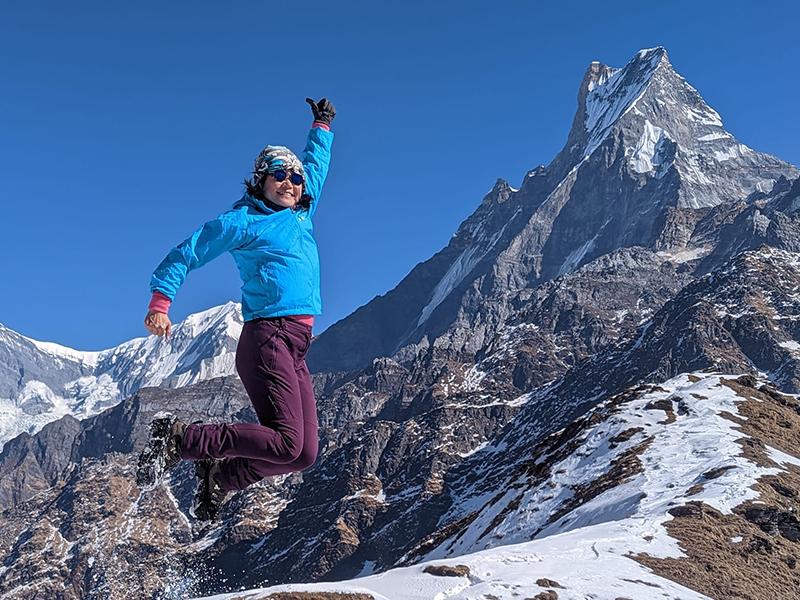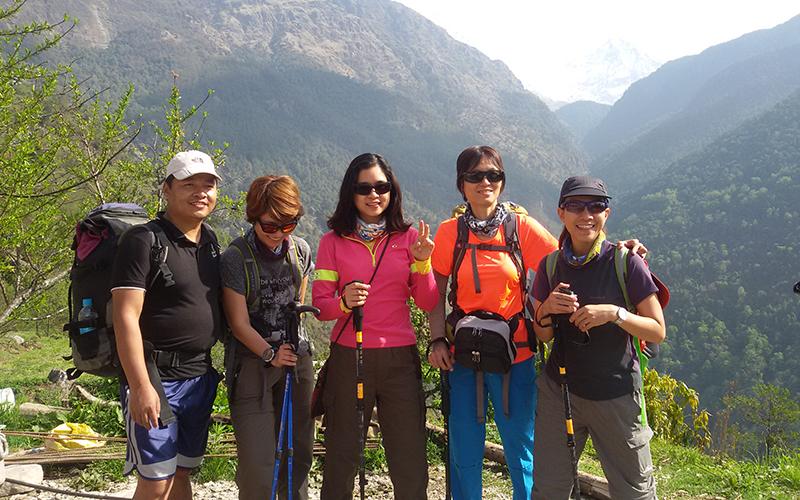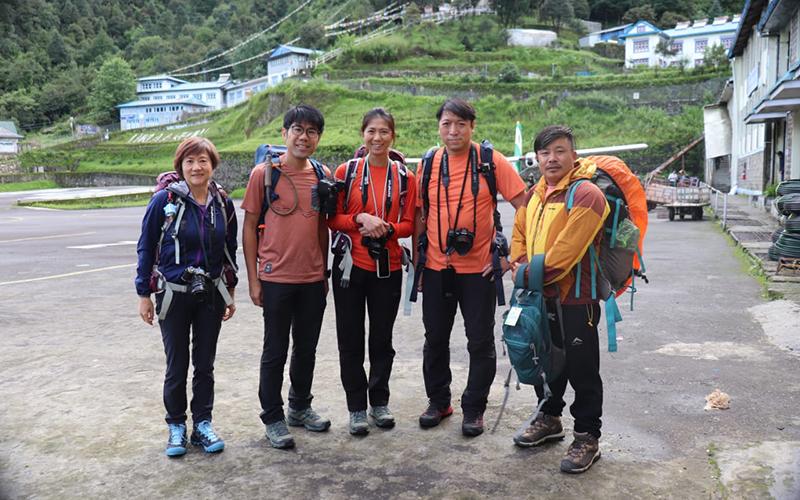How much does it cost to hire a trekking guide in Nepal?

The cost of hiring a trekking guide in Nepal can vary depending on several factors such as the length of the trek, the level of expertise of the guide, the season, and the negotiation skills of the hirer. However, as a general guideline, the cost of hiring a trekking guide in Nepal can range from $20 to $40 per day. This usually includes the guide’s salary, food, accommodation, and insurance. It’s important to note that this cost does not include other expenses such as permits, transportation, and equipment rental.
Additionally, tipping your guide is customary in Nepal and is usually around 10% of the total cost of the trek. It’s always a good idea to do some research and compare prices from different trekking companies and guides before making a final decision. It’s also recommended to book with a licensed and reputable company to ensure the safety and quality of your trekking experience.
The Dos and Don’ts of Planning a Safe and Successful Trek in Nepal
Nepal is a breathtakingly beautiful country that attracts thousands of adventure seekers every year. Trekking in Nepal is a popular activity that offers stunning views of the Himalayas, unique cultural experiences, and a chance to connect with nature. However, planning a trek in Nepal can be a daunting task, especially if you’re not familiar with the terrain and local customs. To ensure a safe and successful trek, it’s important to follow certain dos and don’ts. Whether you’re a seasoned trekker or a first-timer, this guide will provide you with valuable insights on how to plan a trek in Nepal. From choosing the right itinerary and gear to respecting local traditions and practicing responsible tourism, we’ve got you covered. So, grab a cup of tea, sit back, and get ready to embark on an unforgettable adventure in Nepal!
Recommended gear and equipment for trekking
One of the most crucial aspects of planning a trek in Nepal is packing the right gear and equipment. The right gear will ensure that you’re comfortable, safe, and able to enjoy your trek to the fullest. Here are some essentials that you must carry with you:
- Trekking boots: Invest in a good pair of trekking boots that provide ankle support, are waterproof, and have a sturdy sole. It’s essential to break in your boots before embarking on your trek to avoid blisters and discomfort.
- Clothing: Carry clothing that is lightweight, breathable, and suitable for the weather conditions. Layers are essential to keep you warm and comfortable. Don’t forget to carry a waterproof jacket, gloves, and a warm hat.
- Backpack: Invest in a backpack that’s comfortable to carry and has enough space to carry your essentials. Make sure your backpack has a rain cover to protect your belongings during rain or snow.
- Sleeping bag: A good quality sleeping bag is essential to keep you warm and comfortable during cold nights. Make sure you choose a sleeping bag that’s suitable for the season and temperature.
- First Aid kit: Carry a basic first aid kit that includes essential medicines, bandages, and other necessary items.
- Water bottle: Carry a reusable water bottle to stay hydrated throughout your trek. Avoid buying plastic water bottles as they contribute to environmental pollution.
Tips for acclimatization and altitude sickness prevention
Altitude sickness is a common concern for trekkers in Nepal, especially for those trekking above 3000 meters. It’s essential to acclimatize properly to avoid altitude sickness. Here are some tips to help you acclimatize and prevent altitude sickness:
- Gradual ascent: Ascend gradually and take frequent breaks to allow your body to adjust to the altitude. Don’t rush to higher altitudes, even if you feel fine.
- Stay hydrated: Drink plenty of fluids to stay hydrated and avoid alcohol and caffeine as they dehydrate your body.
- Take Diamox: Diamox is a medication that helps prevent altitude sickness. Consult your doctor before taking Diamox and follow the recommended dosage.
- Recognize symptoms: Be aware of the symptoms of altitude sickness, such as headache, nausea, dizziness, and fatigue. If you experience any of these symptoms, descend immediately and seek medical help.
Choosing the right trekking route
Nepal offers a variety of trekking routes, ranging from easy to challenging. It’s important to choose a trekking route that’s suitable for your fitness level and experience. Here are some popular trekking routes in Nepal:
- Everest Base Camp Trek: The Everest Base Camp Trek is a popular trekking route that offers stunning views of the Himalayas and an opportunity to visit the base camp of the world’s highest mountain. The trek is challenging and requires a high level of fitness and experience.
- Annapurna Circuit Trek: The Annapurna Circuit Trek is a classic trek that takes you through diverse landscapes, including lush forests, arid deserts, and high mountain passes. The trek is suitable for trekkers of all levels.
- Langtang Valley Trek: The Langtang Valley Trek is a relatively easy trek that takes you through picturesque villages, forests, and high mountain passes. The trek is suitable for beginners and offers stunning views of the Langtang Himalayas.
Planning your itinerary and budget
Planning your itinerary and budget is crucial to ensure a safe and enjoyable trek in Nepal. Here are some tips to help you plan your itinerary and budget:
- Research: Do your research and choose a trekking route that’s suitable for your fitness level and experience. Consider factors such as the duration of the trek, altitude, and weather conditions.
- Book in advance: Book your flights, accommodation, and guide in advance to avoid last-minute hassles. It’s also advisable to book with a reputable trekking agency to ensure a safe and well-organized trek.
- Budget: Nepal is a budget-friendly destination, and you can easily find affordable accommodation and food. However, it’s essential to have a realistic budget that covers all your expenses, including permits, accommodation, food, and transportation.
Understanding the local culture and customs
Nepal is a culturally rich country with diverse traditions and customs. It’s essential to respect and understand the local culture to have a meaningful and enjoyable trekking experience. Here are some tips to help you respect the local customs:
- Dress modestly: Dress modestly and avoid revealing clothing. It’s also advisable to cover your head while visiting temples and monasteries.
- Respect local customs: Respect local customs and traditions, such as removing your shoes before entering a temple or a private home.
- Learn basic phrases: Learn some basic phrases in Nepali, such as hello, thank you, and please. It will help you connect with the locals and show your respect for their culture.
Hiring a guide and porter
Hiring a guide and porter can enhance your trekking experience and ensure your safety. A guide can provide you with valuable insights into the local culture and customs, while a porter can carry your backpack and make your trekking easier. Here are some tips to help you hire a guide and porter:
- Choose a licensed guide: Choose a licensed guide who has experience in trekking and is knowledgeable about the local culture and customs.
- Check their reviews: Check the reviews of the guide and porter before hiring them. It’s also advisable to hire through a reputable trekking agency.
- Negotiate the price: Negotiate the price with the guide and porter before hiring them. Make sure that the price includes their accommodation, food, and transportation.
Environmental conservation and responsible tourism
Trekking in Nepal can have a significant impact on the environment and the local communities. It’s essential to practice responsible tourism and minimize your impact on the environment. Here are some tips to help you practice responsible tourism:
- Carry your waste: Carry your waste and dispose of it properly. Avoid littering and burning plastic as it contributes to environmental pollution.
- Support local communities: Support local communities by buying locally-made products and using local services.
- Respect wildlife: Respect wildlife and avoid disturbing them. Do not feed or touch animals.
Safety precautions and emergency preparedness
Trekking in Nepal involves some risks, and it’s essential to take safety precautions and be prepared for emergencies. Here are some tips to help you stay safe and prepared:
- Carry a map and compass: Carry a map and compass and know how to use them. It’s also advisable to carry a GPS device.
- Stay informed: Stay informed about the weather conditions and any potential risks or hazards. Listen to the advice of your guide and follow their instructions.
- Carry a whistle and a flashlight: Carry a whistle and a flashlight to signal for help during emergencies.
- Have travel insurance: Have travel insurance that covers trekking and medical emergencies.







